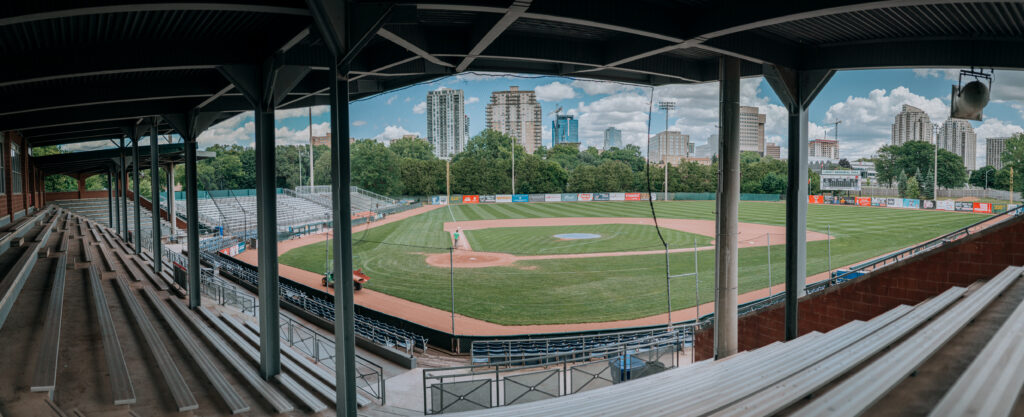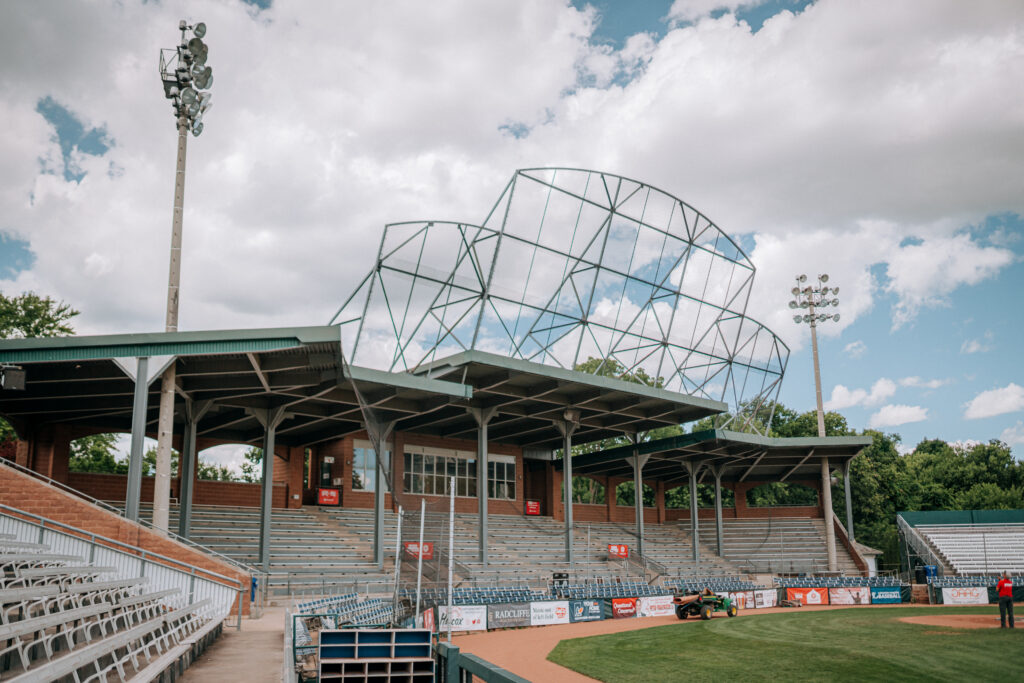By Allan Lynch
One of the curious benefits of the COVID lockdown was a project to reposition Labatt Memorial Park as a place of pilgrimage for baseball fans.
Located in one of the leafy, riverside neighbourhoods of London, ON, Labatt Memorial Park is the world’s oldest baseball grounds. The Park’s first game was played here in 1877. While Park neighbours and diehard local baseball historians knew of this vintage 5,200-seat clubhouse and grounds, it hadn’t been effectively communicated to a wider audience.
Tapping into stadium tourism
“Stadium tourism is a real thing. If you look at Fenway Park, Wrigley Field, Yankee Stadium, people travel to famous ballparks or where their teams play. We knew this market existed, but unfortunately it wasn’t a priority. Then COVID happened,” says Zanth Jarvis, director of sports tourism for the City of London.
“Because of COVID lockdowns, we could take a minute and really focus on internal tourism and what we could promote in London,” Jarvis explains. “At the same time, the province put out a tourism recovery funding grant to develop and enhance new tourism attractions. That’s where we got the funds to be able to start investing in a Park program.”
Harnessing the passion
Fortunately London wasn’t starting from scratch. In addition to the actual Park, the city has passionate local groups like the alumni association of the London Majors (the team that plays there now), the Friends of Labatt Park historical society, as well as the formal expertise provided by the University of Western Ontario’s history program.
Each group had operated as independent information silos. London’s goal was to harness the combined passion and research “to put together a chronological timeline to tell this story from how it started, some notable history and famous players, like Fergie Jenkins, Ty Cobb and Satchel Paige, who played at this field,” Jarvis says.
They also had to offer an experience that went beyond allowing visitors to aimlessly roam the grounds on their own. Thanks to this new focus, a provincial grant and a $25,000 operating budget, Tourism London hired a graphic designer to create 19 on-site storyboards.
They also created a guided tour program where visitors can either join a scheduled tour or request a private tour.
“Tours, which run 30-60 minutes, are primarily [booked] on Eventbrite. There are multiple time slots available throughout the week,” says Dryden Choban, who oversees the Labatt Park guide program. The bulk of visitors are local, who “are shocked to learn we have the record as the world’s oldest park. People have gone their whole lives in London not knowing this fact!”
Ticket sales show 43% of visitors are from outside London and as Choban says, “come as part of a mega-baseball pilgrimage.”
Regional Impact
Embracing the if-you-build-it-they-will-come concept, London created the Southwestern Ontario Baseball Heritage Pass that includes Labatt Memorial Park, the nearby Canadian Baseball Hall of Fame and Museum in St. Marys and Beachville District Museum, outside of Woodstock, where the first recorded baseball game took place in 1838.
Jarvis says, “Part of our grant application was to showcase the regional impact versus just London, because if we can strengthen Southwestern Ontario as a whole as a baseball historic area, that’s going to bring us all more tourism.”
Value & Opportunity
In 2023, overall tourism in London increased 11% to $1.088 billion. Jarvis says, “We don’t have a Niagara Falls or a CN Tower to draw people to the city, so we aggressively pursue events of all shapes and sizes because people will travel for events. We have a tournament every single weekend.”
Because tours must be pre-booked, Tourism London ensures front-line hospitality workers are well aware of the Park’s amenities by inviting them on city familiarization tours.
The final element of the Labatt Memorial Park project is marketing. Videos of the park and players air on Sportsnet during non-Blue Jays games, which is a tenth the cost. Jarvis says, “We understand the demographic [for] our tour is a bit older so we advertise in the London Free Press, on radio, on our tourism website, in our visitor guide and have digital signage around town.”
PHOTOS: TOURISM LONDON
Published September 2024





